Bayucaraka ITS Won Three Champions in Singapore
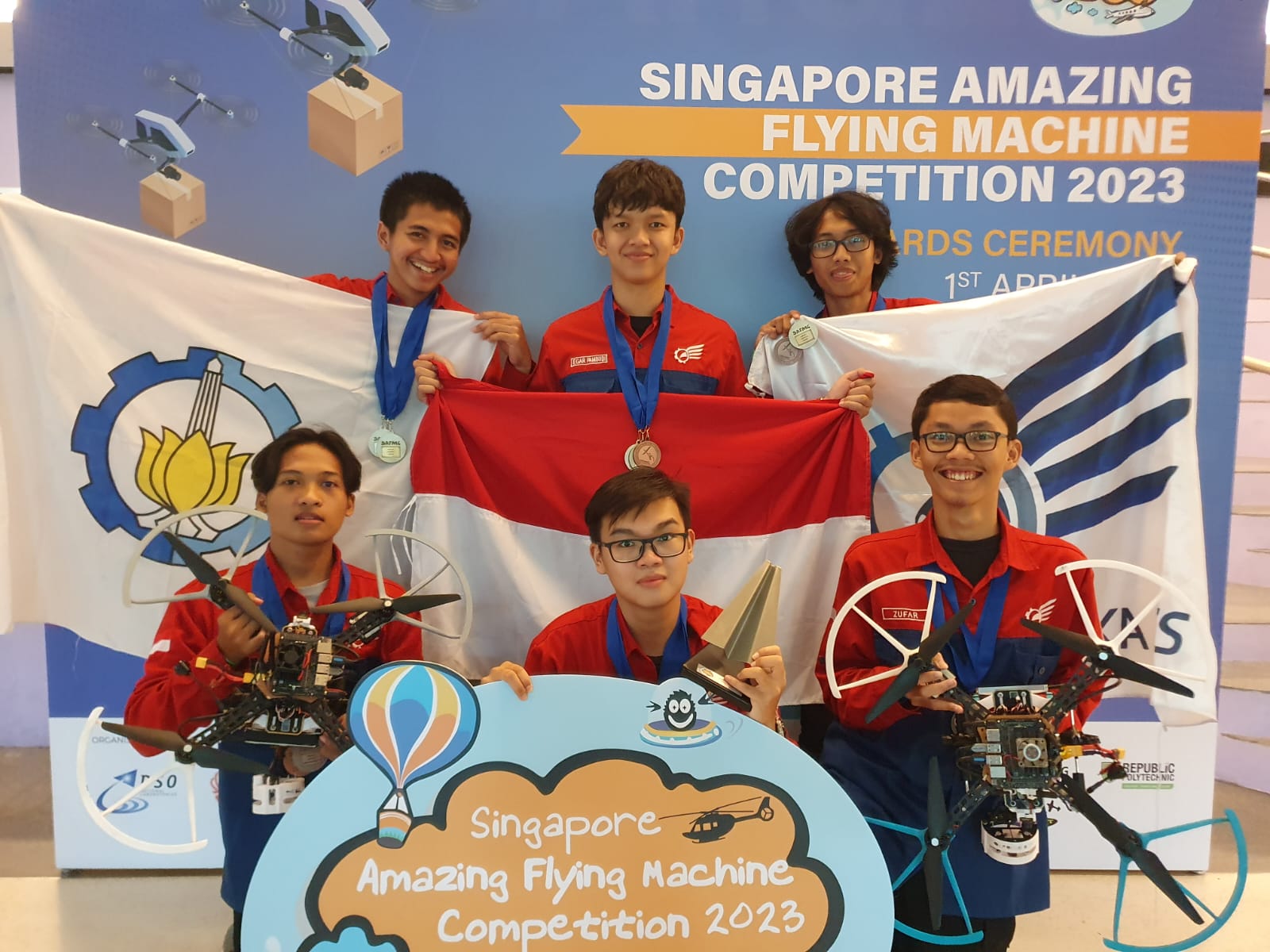
The students of the Soeromiber team from Bayucaraka ITS have gained various champions at the SAFMC 2023 event in Singapore.
ITS Campus, ITS News – Institut Teknologi Sepuluh Nopember (ITS) has made another achievement on the international stage in the field of robotics. This time, through the ITS Bayucaraka flying robot team, which successfully won three prizes at the same time in the 2023 Singapore Amazing Flying Machine Competition (SAFMC) in Singapore, the results were announced on Saturday (1/4).
The primary pilot of ITS Bayucaraka, Martin Adytia, explained that SAFMC is Singapore’s biggest flying machine competition. This competition was organized by the Defense Science Organization (DSO) National Laboratories and Science Center in collaboration with the Singapore Ministry of Defence. “This competition is also divided into eight categories. The ITS Bayucaraka team itself takes part in the Semi-Autonomous (D1) and Autonomous (D2) categories,” he explained.
For the second time participating in this competition, Bayucaraka ITS sent three Vertical Take Off and Landing (VTOL) division teams named Soeromiber Team A, Soeromiber Team B, and Soeromiber. Through these three teams, Bayucaraka worked together to conquer this competition and finally won three titles at once. “We managed to win 1st place in the Autonomous (D2) category, as well as 2nd and 5th place winners in the Semi-Autonomous (D1) category,” said Martin proudly.
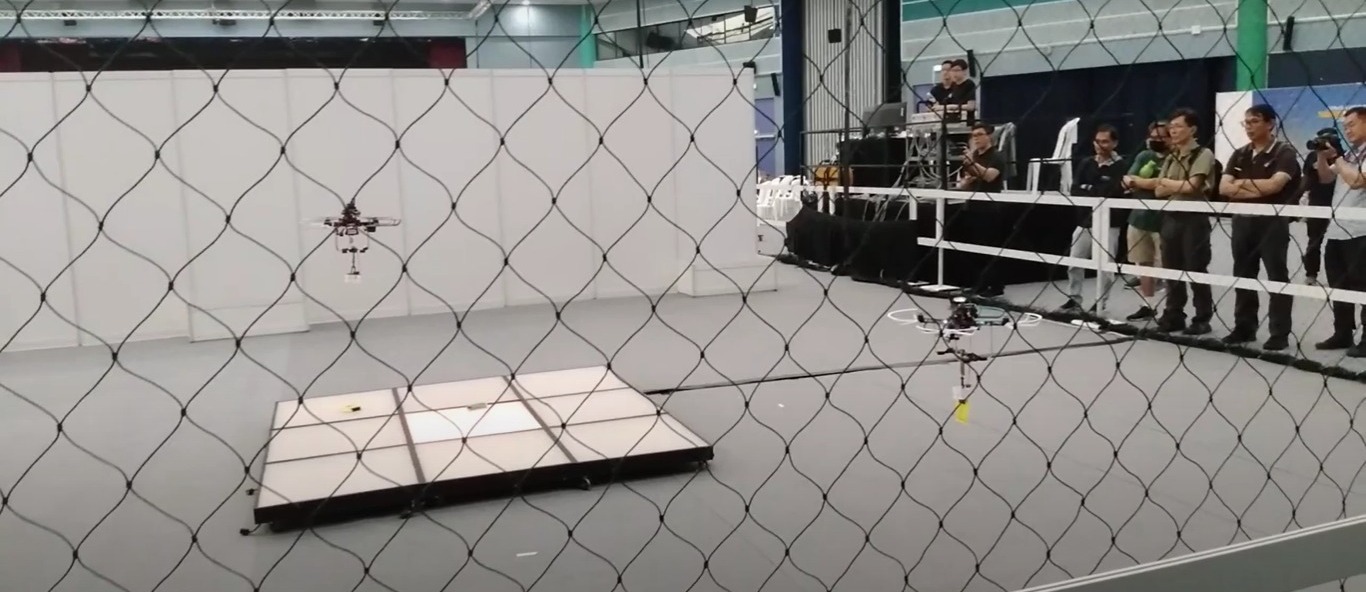
One of the drones of the ITS Bayucaraka team while in the Semi-Autonomous (D1) competition arena at the SAFMC 2023 event in Singapore
Furthermore, the Department of Electrical Engineering student said that breakthrough innovation in the robots being contested was the key to winning this competition. For the Semi-Autonomous (D1) category, the ITS Bayucaraka team created a control tool as a wearable device called Exokinesis. “The tool is designed to use angle sensors and buttons to move two drones simultaneously,” explained the safety pilot.
Not only that, in the Autonomous (D2) category, the team guided by Dr. Rudy Dikairono ST MT also presented innovations. This is done by adding innovation to the mission algorithm so that drones can complete missions quickly and precisely. “We also offer hot-swap batteries, where the drone system doesn’t need to be turned off when swapping to a new battery,” he explained.
The Soeromiber team had to go through various stages to become champions. Three weeks before the competition, they must send a video regarding the team’s progress and drone trials in carrying out the mission. Furthermore, they must also make a presentation on the day of the competition.
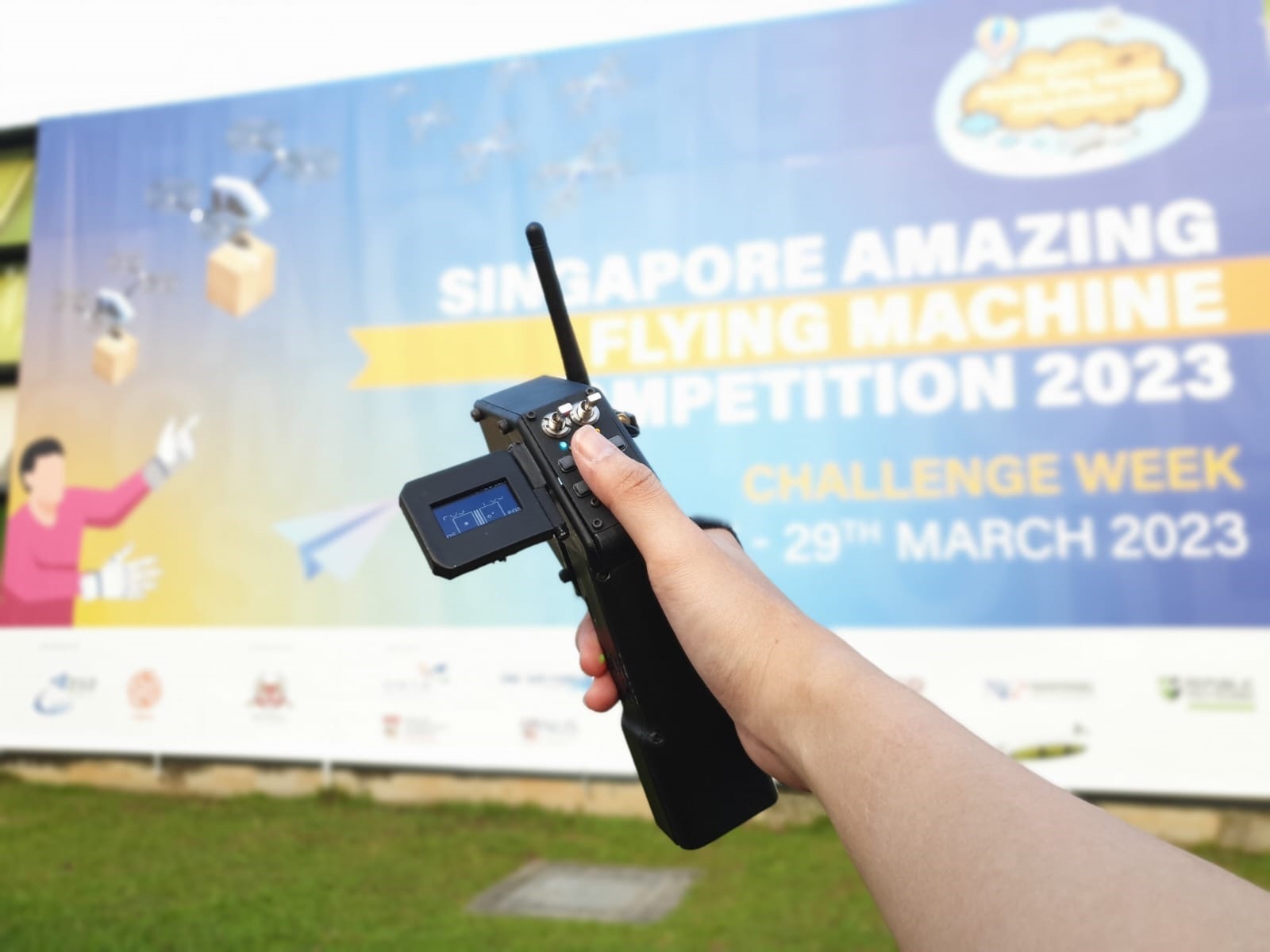
Display of Exokinesis, a drone control tool made by the ITS Bayucaraka team to control two drones at once in one device
In the presentation session, Martin and the team explained drone features, creativity, strategy, and what was learned to the jury. Apart from that, the Bayucaraka team also showed the drones to be used and their control devices to the judges. After that, they enter the competition stage to complete the mission.
The missions that must be completed in each competition category are different. For the Semi-Autonomous (D1) category, Soeromiber Team A and Soeromiber Team B must face the opposing team to achieve the tic-tac-toe mission. The mission requires the drone to fly over a predetermined trajectory while carrying a bean bag.
The object being carried must then be dropped on a 3×3 meter box at the end of the track. This process was repeated in the quarter-finals, semifinals, and finals. If a team can form a vertical, horizontal, or diagonal line first, then that team will be crowned the winner.
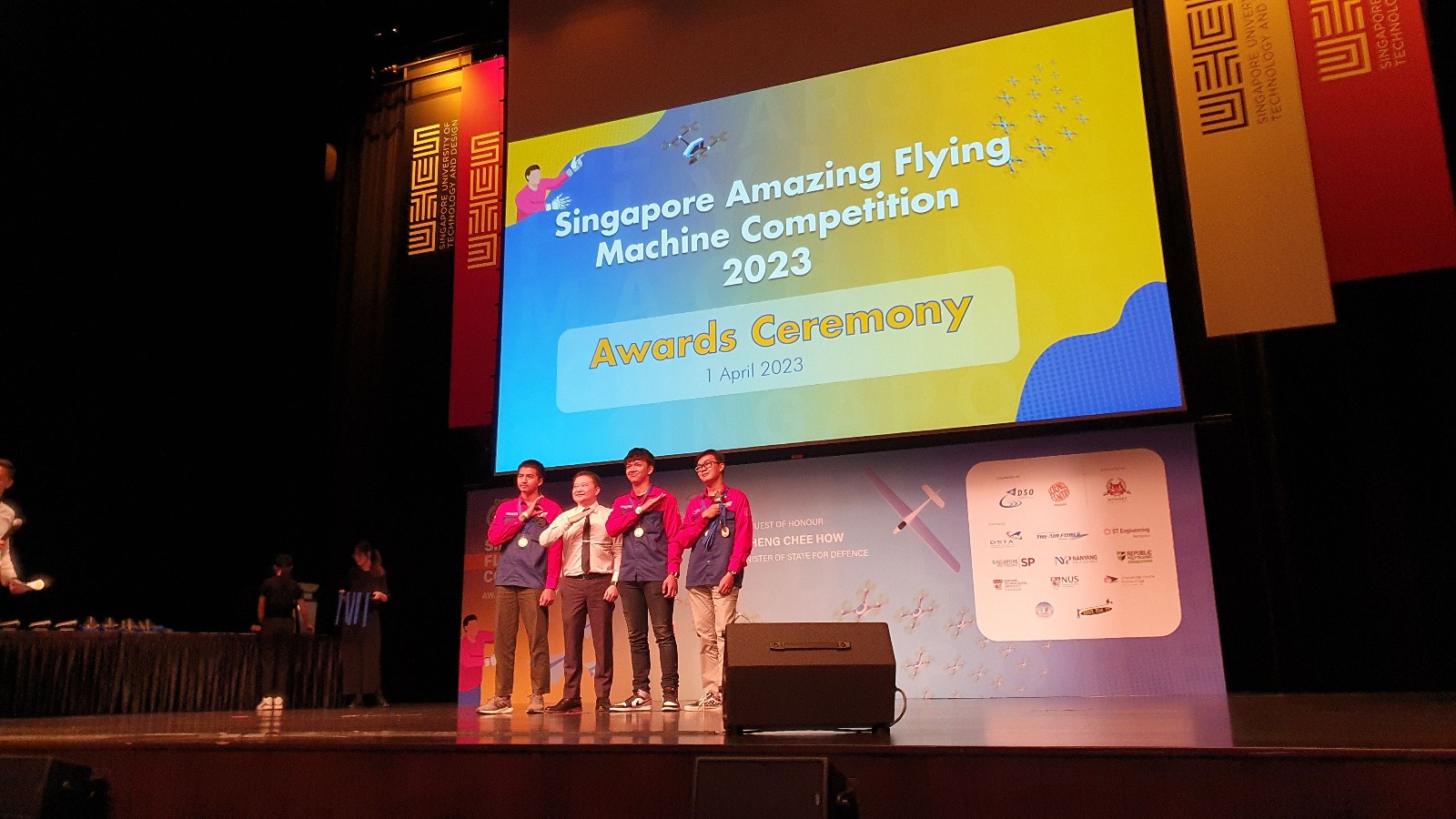
One of the ITS Bayucaraka teams after receiving a championship medal at the SAFMC 2023 event in Singapore
Unlike the previous missions, in the Autonomous category (D2), each competing team was given 45 minutes to prepare and test the mission. The team can carry out any mission within that time frame to earn points. The Soeromiber team carried out the task by flying two drones together while carrying a tray of balls.
The ball is then dropped into a colored funnel in the dropzone area, and if successful, the team gets the point. The process is then repeated until the allotted time is up. The team with the highest points will be crowned the winner of the Autonomous category (D2).
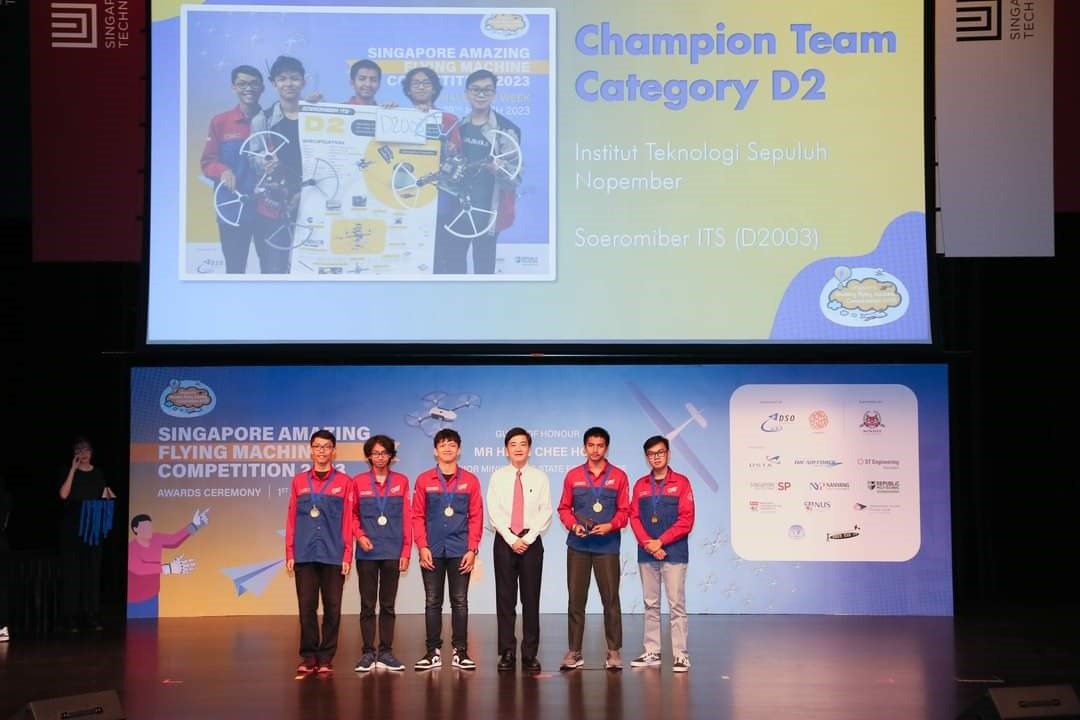
The Soeromiber team from Bayucaraka ITS after receiving the winner’s medal at the SAFMC 2023 event in Singapore (2)
After all, sessions have been carried out, enter the final assessment stage. The student from Batam said that the winner in each category was selected based on the highest accumulated points. Video, presentation, and mission points will be earned as a final grade. “With that accumulation, the ITS Bayucaraka team finally brought home three championship titles,” he said happily.
Even though it took approximately four months and it was challenging to find the right indoor location to carry out the trials, this did not become a barrier for the flying robot team, the pride of ITS. With persistence, the ITS Bayucaraka team made the name of the alma mater and the nation proud. “Hopefully, in the future, the ITS Bayucaraka team can maintain the championship they have won and be able to apply their technological innovations outside of competition,” he concluded. (ITS Public Relations)
Reporter: Nabila Hisanah Yusri
Related News
-
Anticipating Lost Pet Dogs, ITS Students Invent a Tracking Bag
ITS Campus, ITS News —Losing a pet is a sad thing for its owners. To anticipate this, a team
April 03, 2023 23:04 -
ITS Students Integrate Smart City Service Features Through Visionaries
ITS Campus, ITS News — Institut Teknologi Sepuluh Nopember (ITS) continues to prove itself as a home for talented
April 03, 2023 23:04 -
ITS Students Innovate Eco-Quake Building Concept
ITS Campus, ITS News — Along with the development of technology, the construction sector has also experienced rapid growth
April 03, 2023 23:04 -
Great, ITS Successfully Becomes Overall Champion of the 2024 Indonesian Ship Contest
ITS Campus, ITS News — Proving itself as a home for champions, Institut Teknologi Sepuluh Nopember (ITS) managed to
April 03, 2023 23:04
